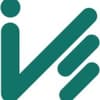Podcast
Questions and Answers
Which model includes a category specifically labeled as 'Design'?
Which model includes a category specifically labeled as 'Design'?
- Mackey (1965)
- Richard & Rodgers (2014) (correct)
- Anthony (1963)
- None of the above
What does Richard & Rodgers's model extend in comparison to Anthony's model?
What does Richard & Rodgers's model extend in comparison to Anthony's model?
- The overall plan for content presentation
- Theories of learning and learning points
- The areas for M and T (correct)
- The categories of Approach and Design
Which of the following correctly describes Anthony's model's approach to learning?
Which of the following correctly describes Anthony's model's approach to learning?
- Behaviorist learning theories
- Non-theoretical approach
- Theories of language and learning (correct)
- Approach based on visual aids
In Richard & Rodgers's model, what is the primary focus of the 'Design' component?
In Richard & Rodgers's model, what is the primary focus of the 'Design' component?
What is referred to as 'Procedure' in Richard & Rodgers's model?
What is referred to as 'Procedure' in Richard & Rodgers's model?
What is the primary focus of the traditional grammar-translation method?
What is the primary focus of the traditional grammar-translation method?
Which of the following is a key characteristic of language as described in the content?
Which of the following is a key characteristic of language as described in the content?
What does the content suggest about specific strategies or activities that foster learning?
What does the content suggest about specific strategies or activities that foster learning?
What is emphasized in the communicative approach to language teaching?
What is emphasized in the communicative approach to language teaching?
Which teaching method is implied to be influenced by a focus on the structure of language?
Which teaching method is implied to be influenced by a focus on the structure of language?
How does the content describe theories related to language learning?
How does the content describe theories related to language learning?
What is a common misconception about the teaching of language based on the content?
What is a common misconception about the teaching of language based on the content?
What are learners expected to do according to the suggested specific strategies?
What are learners expected to do according to the suggested specific strategies?
Which of the following best defines the primary goal of instructional materials?
Which of the following best defines the primary goal of instructional materials?
What does the form of instructional materials refer to?
What does the form of instructional materials refer to?
How do instructional materials relate to other sources of input?
How do instructional materials relate to other sources of input?
Which dimension relates to the use of teaching activities in presenting new language?
Which dimension relates to the use of teaching activities in presenting new language?
What is a key factor in the effectiveness of instructional materials?
What is a key factor in the effectiveness of instructional materials?
What is the primary function of the adult in the learning process?
What is the primary function of the adult in the learning process?
Which aspect is emphasized in negotiation of meaning during language acquisition?
Which aspect is emphasized in negotiation of meaning during language acquisition?
In the context of syllabus design, which type of outcome focuses on acquiring knowledge rather than proficiency?
In the context of syllabus design, which type of outcome focuses on acquiring knowledge rather than proficiency?
What does a product-centered syllabus focus on?
What does a product-centered syllabus focus on?
What role do learners play in the educational process according to the document?
What role do learners play in the educational process according to the document?
Which of the following best describes a more demanding role for the teacher?
Which of the following best describes a more demanding role for the teacher?
How does a method advocate differentiate types of teaching and learning activities?
How does a method advocate differentiate types of teaching and learning activities?
What is a potential outcome of differentiating activity types in learning methods?
What is a potential outcome of differentiating activity types in learning methods?
What is the primary teaching approach emphasized in Communicative Language Teaching (CLT)?
What is the primary teaching approach emphasized in Communicative Language Teaching (CLT)?
In Task-based Language Teaching (TBLT), what is a central activity that students engage in?
In Task-based Language Teaching (TBLT), what is a central activity that students engage in?
What does Content-based Language Teaching (CBLT) primarily integrate into language learning?
What does Content-based Language Teaching (CBLT) primarily integrate into language learning?
Which of the following best describes the role of interaction in language learning?
Which of the following best describes the role of interaction in language learning?
In terms of language use, what does the communicative purpose of language refer to?
In terms of language use, what does the communicative purpose of language refer to?
What impact does culture have on language learning, according to the theories discussed?
What impact does culture have on language learning, according to the theories discussed?
What type of materials are emphasized in language education to demonstrate real-life language usage?
What type of materials are emphasized in language education to demonstrate real-life language usage?
What is a characteristic of role-plays in language learning?
What is a characteristic of role-plays in language learning?
Study Notes
Richard & Rodgers's Model of A - D - P
- Extends Anthony's model.
- Incorporates areas of "M" (Method) and "T" (Technique).
Comparison of 3 Models
- Approach: Both Anthony's and Richard & Rodgers's models focus on theories of language and language learning. Mackey's model does not.
- Design: Richard & Rodgers's model is described as "Design", specifying objectives, syllabus, types of learning tasks, teaching activities, teacher and learner roles, and the role of instructional materials.
- Procedure: Similar to Design, Richard & Rodgers's model is referred to as "Procedure", outlining specific activities with sequences, interaction patterns, resources, and teaching strategies.
Approach (A)
- Relates to theories about the nature of language and language learning, essentially reflecting the philosophy and belief system behind a particular method.
Theory of Language
- Language is complex and studied from different perspectives.
- There are 4 key models that influenced language teaching methods:
- Structural Model: Focuses on the underlying structure of language, including grammar.
- Communicative Model: Focuses on the practical use and communicative purposes of language.
- Interactionist Model: Emphasizes the role of interaction and negotiation in language learning.
- Social-Cultural Model: Integrates social and cultural context into the language learning process.
Theory of Language Learning
- Second Language Acquisition focuses on how languages are learned.
- Important factors include:
- Social and Cultural Interaction: Language learning is influenced by the cultural context and interactions with others.
- Interactional Theory: Language acquisition is driven by face-to-face interaction and the processes of negotiating meaning.
Design (D)
- Defines and outlines how the learning process is structured.
Objectives
- Specific learning outcomes to be achieved.
- Differentiates between process-oriented and product-oriented outcomes.
- Addresses the difference between accumulating knowledge and becoming proficient.
Syllabus
- Selection and organization of content.
- Choice of language content is significant.
- Transition from product-focused syllabus to process-focused syllabus.
Types of Teaching and Learning Activities
- Activities are designed to achieve the defined objectives.
- Different methods advocate for different types of activities.
- Philosophical differences in the approach may be reflected in the use of different activities, arrangements, and groupings of learners.
Learners' Role
- Learners are viewed as contributors to the learning process.
- The role is determined by the types of activities, control over content, group dynamics, and influence on the learning process.
Teacher Roles
- The teacher's role adapts to different methods, ranging from more directive to facilitative approaches.
- Certain methods require specific roles for teachers, like facilitators, organizers, and guides.
Role of Instructional Materials
- The design of materials is essential, including the purpose, form, relation to other resources, and alignment with teacher abilities.
Procedure (P)
- Explains how the method (M) and design (D) are implemented in classroom behavior, including how tasks and activities are organized and integrated.
Key Dimensions of Procedure:
- Using teaching activities to present new language and clarify its features.
- Utilizing teaching activities for practicing and producing language.
- Feedback mechanisms for learners on their language use.
- Interaction patterns in the classroom.
- Teaching aids and resources.
Studying That Suits You
Use AI to generate personalized quizzes and flashcards to suit your learning preferences.
Related Documents
Description
This quiz explores Richard & Rodgers's Model of Approach, Design, and Procedure in language teaching. It compares this model with Anthony's and Mackey's theories, highlighting the significance of methods and techniques in language learning. Test your understanding of the complexities of language theories and their applications in education.





